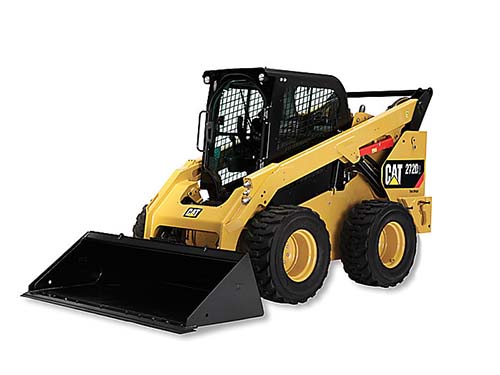Equipment supply

|
‘Supply’ is the flow of resources used to satisfy a demand, such as materials, labour, information and skills – from a supplier to a user or consumer.
Equipment supply – in a construction sense – is the flow of equipment from a supplier to a site with the aim of facilitating the construction process. For example, the supply of an excavator to help dig the foundations, or a crane to lift heavy materials.
Very broadly, the term ‘equipment’ generally refers to apparatus that is used for specific purposes, e.g pumps are used to pump water, angle grinders are used to cut through hard materials. This is as opposed to individual tools such as screwdrivers, hammers and trowels which are instruments that are generally used by hand.
Usually, a contractor or sub-contractor orders the equipment from a supplier to complete a particular task. Because construction equipment can be very costly, and because it may sometimes be needed by a contractor or sub-contractor for only small duration during the year, it may be financially advantageous to hire the equipment only for the period it is required. This is not only cheaper for the contractor but also means the equipment does not require storage. Also, hiring the equipment means the contractor does not have to maintain it.
The following is a selection of typical equipment that may be supplied to a construction site:
- Access equipment.
- Attachments
- Bowsers
- Compressors
- Dumpers
- Forklifts/telehandlers
- Mixers
- Pumps
- Rollers
- Skips
- Topsoil screeners
- Wheeled excavators.
Equipment may also be required for inclusion in the building itself, for example; washing machines, coffee machines and scanning equipment, fume cupboards and so on.
In this case, it is important to identify equipment that will be provided by the contractor as part of the main contract and equipment which will be provided outside of the main contract (because the client may already have the equipment, or they may have existing suppliers). This is particularly important where equipment supplied outside of the main contract may have an impact on the construction works, perhaps needing to be accommodated in a certain location, or requiring fixing, power supply, air supply, water, drainage, telecommunications connection, etc.
[edit] Related articles on Designing Buildings Wiki
Featured articles and news
The UK's Modern Industrial Strategy: A 10 year plan
Previous consultation criticism, current key elements and general support with some persisting reservations.
Building Safety Regulator reforms
New roles, new staff and a new fast track service pave the way for a single construction regulator.
Architectural Technologist CPDs and Communications
CIAT CPD… and how you can do it!
Cooling centres and cool spaces
Managing extreme heat in cities by directing the public to places for heat stress relief and water sources.
Winter gardens: A brief history and warm variations
Extending the season with glass in different forms and terms.
Restoring Great Yarmouth's Winter Gardens
Transforming one of the least sustainable constructions imaginable.
Construction Skills Mission Board launch sector drive
Newly formed government and industry collaboration set strategy for recruiting an additional 100,000 construction workers a year.
New Architects Code comes into effect in September 2025
ARB Architects Code of Conduct and Practice available with ongoing consultation regarding guidance.
Welsh Skills Body (Medr) launches ambitious plan
The new skills body brings together funding and regulation of tertiary education and research for the devolved nation.
Paul Gandy FCIOB announced as next CIOB President
Former Tilbury Douglas CEO takes helm.
UK Infrastructure: A 10 Year Strategy. In brief with reactions
With the National Infrastructure and Service Transformation Authority (NISTA).
Ebenezer Howard: inventor of the garden city. Book review.
The Grenfell Tower fire, eight years on
A time to pause and reflect as Dubai tower block fire reported just before anniversary.
Airtightness Topic Guide BSRIA TG 27/2025
Explaining the basics of airtightness, what it is, why it's important, when it's required and how it's carried out.
Construction contract awards hit lowest point of 2025
Plummeting for second consecutive month, intensifying concerns for housing and infrastructure goals.
Understanding Mental Health in the Built Environment 2025
Examining the state of mental health in construction, shedding light on levels of stress, anxiety and depression.





















